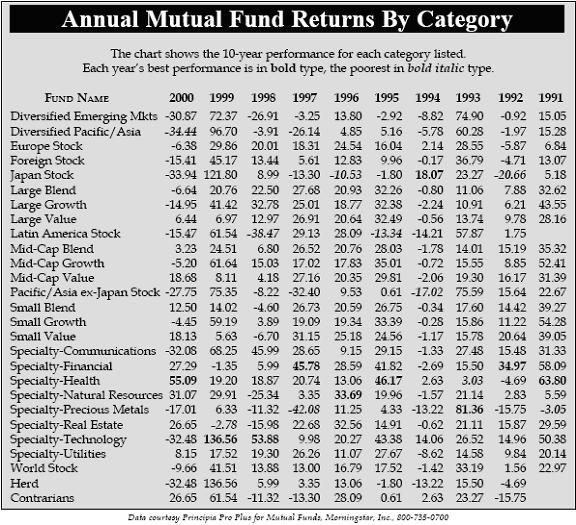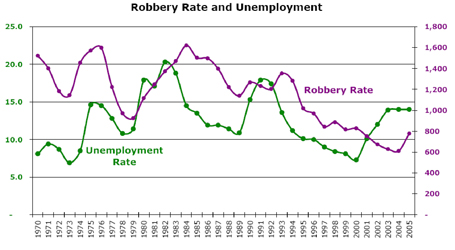To quote Warren Buffett, are private equity investors “looking in the rearview mirror instead of through the windshield?” Has the popularity of this asset class created a case of too much money chasing too little opportunity?
After the stock market’s downturn in the beginning of this decade, institutional and wealthy individual investors alike flocked to private equity. These investors were searching for an alternative to the public stock markets, seeking outsized expected returns and low correlations to other asset classes.
Private equity refers to investing in companies that are not publicly traded. The two primary types are venture capital, which seeds start-up companies, and leveraged buyouts (LBOs), which use debt to acquire undervalued mature businesses. A detailed description of the private equity marketplace can be found in Jonathan Bergman’s article, “Private Equity Funds Reward Right Investor” in the June 2001 issue of Sentinel.
Private equity funds earn their returns by seeking out undervalued companies, then looking to improve the underlying economics of the acquired businesses by streamlining processes, eliminating bottlenecks, reducing costs and increasing marketing and other revenue drivers. The goal is to create more professional management of operations and of the businesses as a whole. Private equity firms then look to exit their investments by selling the businesses (“portfolio companies”) to other acquirers — typically, larger companies in a business related to that of a portfolio company — or by taking the portfolio companies public.
The ability of private equity firms to earn returns in excess of the public markets relies partly on this capacity to create value by improving the underlying businesses. Another factor in the success of private equity investments is the judicious use of borrowed money, or leverage, to amplify portfolio company returns. Leverage, however, increases the risk that a company can fail, so highly leveraged transactions can be dangerous.
| Venture Capital1 | Buyout & Mezzanine2 | |||
| Year/Quarter | Number of Funds | Venture Capital ($M) | Number of Funds | Buyout & Mezzanine ($M) |
| 2002 | 173 | 3,931.90 | 88 | 26,153.50 |
| 2003 | 144 | 10,771.40 | 91 | 29,506.70 |
| 2004 | 195 | 17,900.60 | 135 | 51,784.60 |
| 2005 | 194 | 26,061.30 | 169 | 94,191.70 |
| 20063 | 51 | 6,531.90 | 42 | 24,875.10 |
1 These are net figures and take into account the subtractive effect of downsized funds.
2 This category includes LBO, Mezzanine, Turnaround and Recapitalization-focused funds.
3 Through March 31, 2006
But another key factor in private equity returns is the price paid for the presumably undervalued private companies at acquisition, and market conditions at the time of exit. The massive investor influx into private equity makes me wonder whether the current crop of P.E. funds will be able to deploy their capital effectively.
Figure 1 displays the assets raised annually by private equity funds for the period 2002-2006.
This chart illustrates the rapid growth in investment flows into both venture capital and other private equity funds in recent years. With this influx of capital, the market in private companies may become more efficient. When more money flows to an asset class, the investments underlying that class command more attention: more analysts trying to compute intrinsic value; more investment banks willing to participate in this market space; more investor focus in general. As there are more bidders in auctions for business sales, this may drive up the prices paid for private companies and reduce the discounts from value that drive private equity returns.
It is possible that there is an overallocation of capital to the private equity asset class at this time. It is my hypothesis that this trend may continue, and that as investors continue pouring money into alternative investments, private equity returns will be dampened. However, thus far this supposition has not been borne out by the data. Figure 2 displays the returns of U.S. private equity funds over various shortand long-term periods.
This chart reflects that over the prior one- and three-year periods, private equity funds have continued to earn stellar returns. Based on data provided by Morningstar Inc., the Standard & Poor’s 500-stock index returned 4.9 percent in 2005. Therefore, the private equity asset class outpaced this index by 17.7 percent in 2005.
However, this average data may be masking a large dispersion in returns. Particularly in the LBO market, often only the top-tier players have access to the quality deal flow as a result of extensive networks of contacts and proven reputations. As the demand for private equity investments increases, and as Figure 1 shows in the “number of funds” column, more Wall Street investment firms are bringing new private equity products to the marketplace. The ability of these firms to match the returns of the proven LBO shops is untested.
Investment Horizon Performance through Dec. 31, 2005
| FUND TYPE | 1 YEAR | 3 YEAR | 5 YEAR | 10 YEAR | 20 YEAR |
| Early/Seed VC | 8.3 | 3.1 | -10.9 | 41.5 | 20.4 |
| Balanced VC | 24.3 | 11.7 | -3.5 | 18.9 | 14.6 |
| Later Stage VC | 6.9 | 8.6 | -4.1 | 11.3 | 13.5 |
| All Venture | 15.6 | 7.5 | -6.8 | 23.7 | 16.5 |
| Small Buyouts | 11.5 | 7.8 | 2.1 | 7.9 | 25.4 |
| Medium Buyouts | 33.8 | 10 | 2.9 | 10.9 | 16.5 |
| Large Buyouts | 18.2 | 16 | 4 | 10.2 | 12.7 |
| Mega Buyouts | 35.7 | 17.8 | 6 | 8.8 | 11.4 |
| All Buyouts | 31.3 | 16.3 | 5.2 | 9.2 | 13.3 |
| Mezzanine | 12.2 | 4.8 | 2.2 | 6.4 | 8.9 |
| All Private Equity | 22.6 | 13.1 | 1.5 | 12.3 | 14.2 |
Will they be able to go head to head with the most experienced and brightest in the field? Or will it be another case of large investment companies’ sales-driven cultures creating inferior products in order to capture market share and rake in management fees? Only time will tell, but where possible, I recommend investing only with private equity firms or general partners that have proven track records.
Another disturbing trend in private equity recently is a recycling of companies by one private equity firm to another. In contrast to the “sell to a strategic acquirer” exit model, private equity firms increasingly are selling portfolio companies to other private equity firms. In this “musical chairs” scenario, who is left holding the bag? There is a risk that new buyers will continue to pay ever-inflated prices as they chase the returns that earlier investors received. This is the “greater fool theory” of investing. It seldom ends happily for the last fool in line.
Admittedly, the portfolio company may be improved by successive private equity investors. For example, if a buyout shop specializing in small companies helps the portfolio company grow to a size at which the private equity firm’s expertise is exhausted, it may make economic sense to sell to another private equity firm that specializes in larger companies to take it to the next level.
At Palisades Hudson, we believe that private equity has a place in a high-net-worth individual’s portfolio. Typically it is appropriate to put 5 percent to 10 percent of the overall portfolio, or 10 percent of the equity portion of the portfolio, in private equities; in the case of institutional or very large family portfolios, it may be reasonable to devote even more to this asset class if there are good investment opportunities. We look for investment vehicles whose managers offer transparency, proven track records and sound strategies.
As with any asset class, it is important not to be irrationally exuberant about its potential as the holy grail of investments. Private equity makes sense as part of an efficiently diversified portfolio with exposure to public equities large and small, fixed-income investments, international investments and real estate, among other asset classes.












